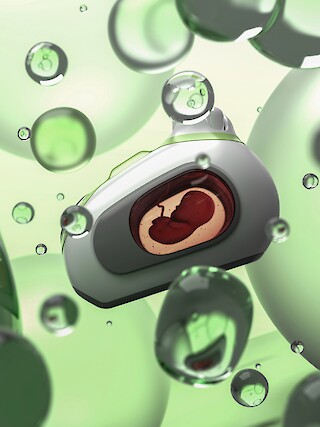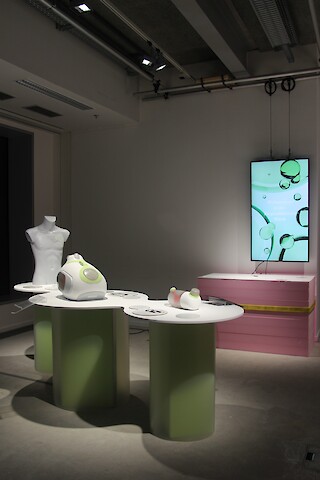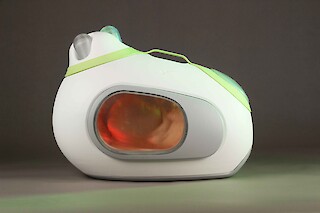«Re:production» is a speculative design project about the future of human reproduction. As reproduction is increasingly technologised, new ways of having children become possible. These prompt many ethical questions. This project puts the use of such technologies up for discussion.
In a specially designed fertility clinic, everyone – independent of age, gender, fertility or relationship model – can create a child in three steps involving conception, gestation and bonding. Each step is represented by a fictional product:
- The device Re:create is about modified embryos and highlights the issue of eugenics in genetic research.
- Re:nest is an external and optimised breeding environment. It raises questions about the role of the body as a resource and pregnancy as work.
- Re:bond consists of three body patches which ensure a bond between the growing child and the parents involved. They serve to question the importance of the physical and emotional bond during pregnancy.
Visitors can indicate their preferences in a digital questionnaire, and the clinic can be experienced both as an exhibition and an online store.
Striking a balance between fiction and reality, this project creates an immersive experience in which ethical dilemmas, personal desires and social responsibility combine. Speculative design thus becomes a research tool which makes the future tangible and encourages a dialogue between science and society.
«The project ‹Re:production› convinces with a visionary, speculative scenario that addresses highly topical questions concerning reproduction: What happens when natural fertility decreases and technology creates new opportunities? [...] ‹Re:production› uses design as a critical tool to make the future tangible, to question cultural narratives and to open up new spaces of reflection.» – Excerpt supporting statement of the Subject Area Industrial Design
«The project uses speculative design as an innovative research tool, enabling it to reflect the opinions of a broad cross-section of society on this topic in a nuanced and interactive way.» – Raymond Frey & Papoula Kolb

«In future, I would like to use design as a cultural and research practice, raise questions together with others, create spaces for reflection and help initiate social change.» – Papoula Kolb



«I see myself at the intersection of design, research and culture where I can develop new thought processes as part of collaborative projects.» – Raymond Frey